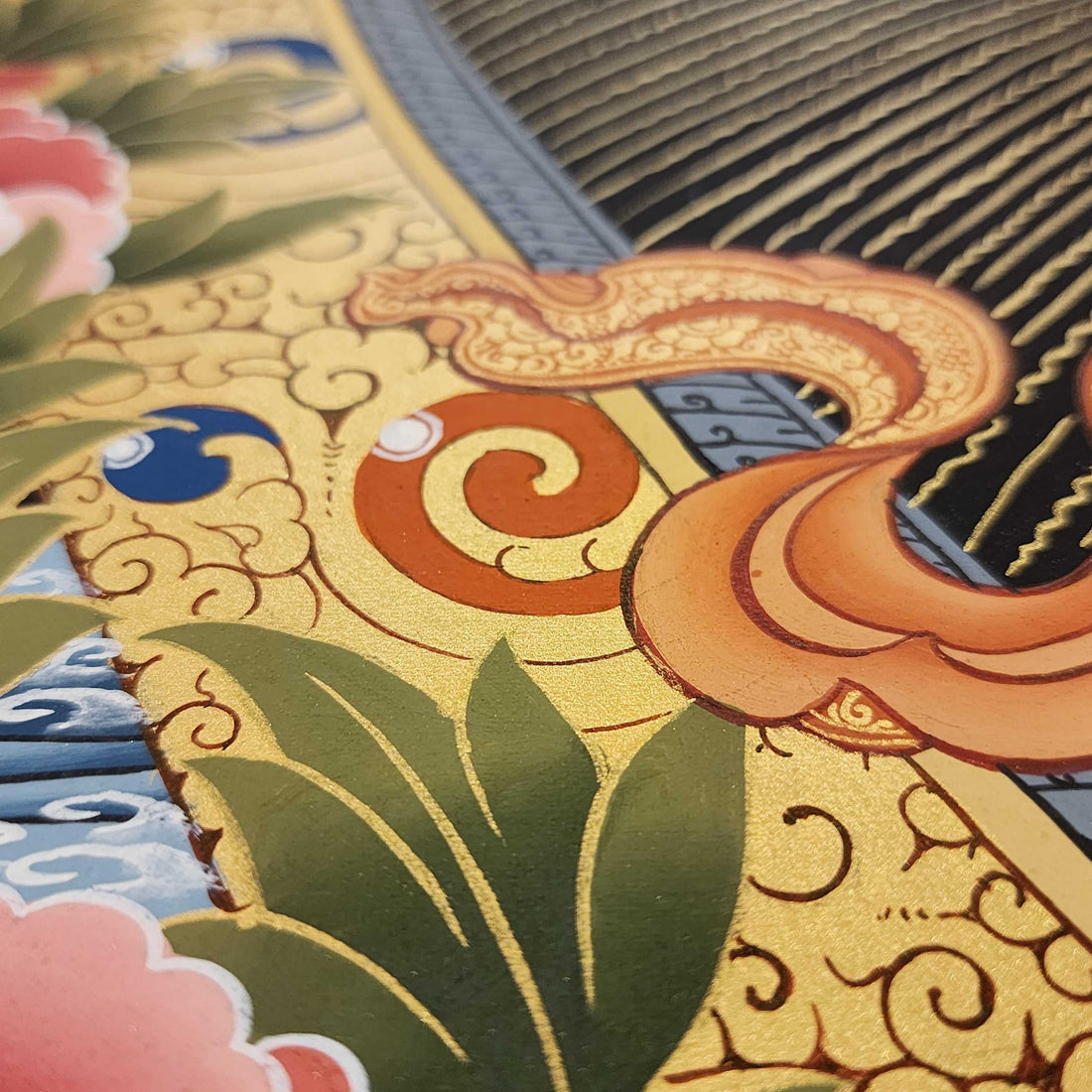
Famous Deities Depicted in Tibetan Thangka Art
Share
Famous Deities Depicted in Tibetan Thangka Art
Introduction
Tibetan Thangka paintings often feature divine figures that embody Buddhist teachings and spiritual qualities. These deities are not worshipped as gods in the Western sense. Instead, they represent enlightened states of mind and guide practitioners toward compassion, wisdom, and liberation.
Why Deities Are Central to Thangka Art
In Tibetan Buddhism, visualizing a deity during meditation helps practitioners connect with the qualities that figure represents. Thangka paintings serve as sacred mirrors, reflecting the enlightened mind back to the viewer.
Key Deities in Tibetan Thangka Art
Avalokiteshvara (Chenrezig)
Symbolism: Infinite compassion.
Iconography: Often depicted with four arms (or more) and a peaceful expression.
Mantra: Om Mani Padme Hum.
Tara (Green & White)
Green Tara: Swift action and protection from fear.
White Tara: Long life and healing.
Iconography: Green Tara is seated in readiness to help; White Tara has eyes on her palms and forehead, symbolizing awareness.
Medicine Buddha (Bhaisajyaguru)
Symbolism: Healing of physical and spiritual illness.
Iconography: Deep blue skin, holding a myrobalan plant.
Vajrapani
Symbolism: Power and the removal of obstacles.
Iconography: Wrathful expression, holding a vajra (thunderbolt).
Amitabha Buddha
Symbolism: Boundless light and compassion.
Iconography: Red color, meditative posture, hands in dhyana mudra.
Manjushri
Symbolism: Wisdom and clarity.
Iconography: Holding a flaming sword that cuts through ignorance.
How Deities Are Represented in Thangka Art
Every gesture (mudra), color, and object in a deity’s depiction has symbolic meaning. For example, lotus flowers symbolize purity, while wrathful expressions protect the Dharma by removing negativity.
Modern Relevance
Collectors, practitioners, and art lovers value deity Thangkas for their beauty, spiritual depth, and cultural heritage. Owning one can be a way to honor Tibetan Buddhist traditions and invite specific blessings into one’s space.
Conclusion
Tibetan Thangka art is more than visual beauty. It’s a spiritual language. The deities it portrays are archetypes of compassion, wisdom, healing, and protection, guiding us toward our own enlightened potential.
